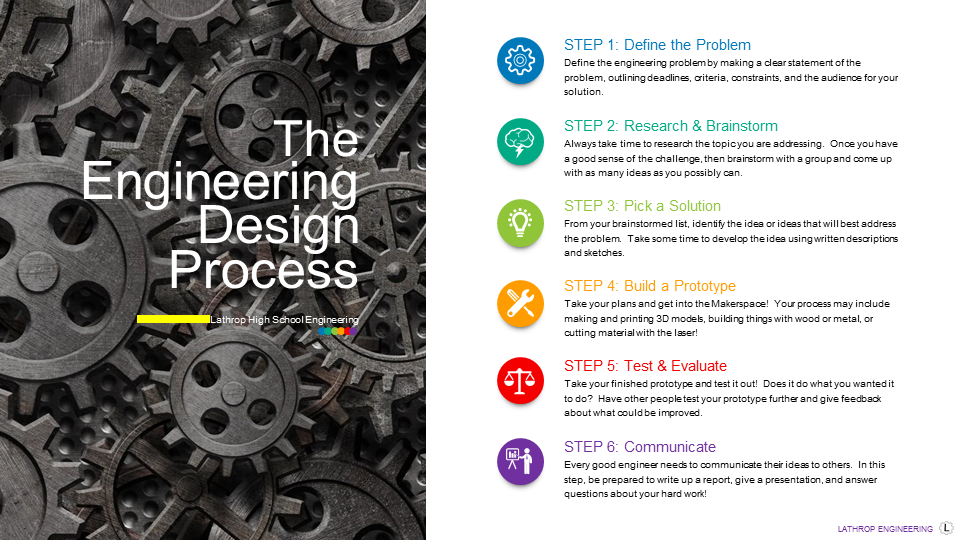All good engineers need to be able to communicate their ideas clearly. Sometimes this means writing detailed reports or giving presentations. Often, clear communication starts with a good sketch of the object you’re working with. In this unit you should be learning:
- How to use concept sketching to share ideas
- How to draw carefully with oblique, isometric, perspective, and multiview sketching
- How to use sketching to illustrate the solutions to problems
In practice, good sketches help engineers remember ideas and share their solutions with other engineers. As we practice our sketching skills in this unit, you’ll go through three major steps:
- STEP 1: Practice concept, oblique, and isometric sketching
- STEP 2: Learn about perspective sketching and multiview sketching
- STEP 3: Brainstorm and draw a solution to a problem
When you’re done, you’ll have five different ways you can sketch your ideas as you continue your engineering work!
Good sketches help engineers communicate. As our class in Engineering & Design gets started, it’s essential that we start with good sketching and drawing skills. In the first part of this unit, you’ll start by practice three types of sketching: concept sketching, oblique sketching, and isometric sketching.
Concept sketching is used to give an overall idea of an object or solution – they are easy to label and give the viewer a sense of dimension. Oblique sketching focuses on a main front face and creates a subtle illusion of depth. Isometric sketching is more mathematical and gives the viewer a clean view of the front, right, and top faces of the object. In this part of the unit, you’ll practice all three!
GRADING & PROCESS
![]() Take 1 full page of detailed notes on the Sketching Overview
Take 1 full page of detailed notes on the Sketching Overview
![]() Complete 3 practice Concept Sketches in your engineering notebook
Complete 3 practice Concept Sketches in your engineering notebook
![]() Complete 3 practice Oblique Sketches in your engineering notebook
Complete 3 practice Oblique Sketches in your engineering notebook
![]() Complete 3 practice Isometric Sketches in your engineering notebook
Complete 3 practice Isometric Sketches in your engineering notebook
![]() Have Mr. Benshoof confirm your sketches
Have Mr. Benshoof confirm your sketches
Concept Sketching Tutorial
Oblique Sketching Tutorial
Isometric Sketching Tutorial
Sometimes, sketching with oblique or isometric perspective doesn’t quite do the job. In instances where we want to demonstrate more precise depth, perspective sketching will be the right tool. Other times we need to be able to show details on multiple sides of an object – in that case, multiview sketching will be best. In this part of the unit, you’ll learn about perspective and multiview sketching and then get practice with each of them!
GRADING & PROCESS
![]() Take some notes on the Sketching Overview 2
Take some notes on the Sketching Overview 2
![]() Complete 3 practice 1-Point Perspective Sketches in your engineering notebook
Complete 3 practice 1-Point Perspective Sketches in your engineering notebook
![]() Complete 3 practice 2-Point Perspective Sketches in your engineering notebook
Complete 3 practice 2-Point Perspective Sketches in your engineering notebook
![]() Build the “Glass Box” and use it to create your first Multiview Sketch in your notebook
Build the “Glass Box” and use it to create your first Multiview Sketch in your notebook
![]() Complete 2 more practice Multiview Sketches in your engineering notebook
Complete 2 more practice Multiview Sketches in your engineering notebook
![]() Have Mr. Benshoof confirm your new sketches
Have Mr. Benshoof confirm your new sketches
1-Point Perspective Tutorial
2-Point Perspective Tutorial
Multiview Sketching Tutorial
Engineering is all about using math and science to solve problems. As we start to look toward the details of the engineering design process, we’ll finish our unit by using our sketching skills to illustrate our thinking. In this part you will work to identify a simple problem you encounter on a regular basis. Then, you’ll brainstorm possible solutions for that problem. Once you’ve settled on a specific solution your job will be to draw it using at least three of the sketching techniques discussed. We’ll be sure to label the important parts of the solution and then we’ll be able to share it with other engineers.
GRADING & PROCESS
![]() Identify a problem you want to think about and define it clearly in your engineering notebook
Identify a problem you want to think about and define it clearly in your engineering notebook
![]() Brainstorm at least 10 possible solutions to your problem and write down your ideas in your notebook; then choose one of those ideas to draw
Brainstorm at least 10 possible solutions to your problem and write down your ideas in your notebook; then choose one of those ideas to draw
![]() Carefully sketch your solution idea in 3 ways, using a different sketching technique each time
Carefully sketch your solution idea in 3 ways, using a different sketching technique each time
![]() Have Mr. Benshoof confirm your solution sketches
Have Mr. Benshoof confirm your solution sketches
Sketching Solutions Overview
Engineering Design Process Overview
Part 1 Resources
Part 2 Resources
